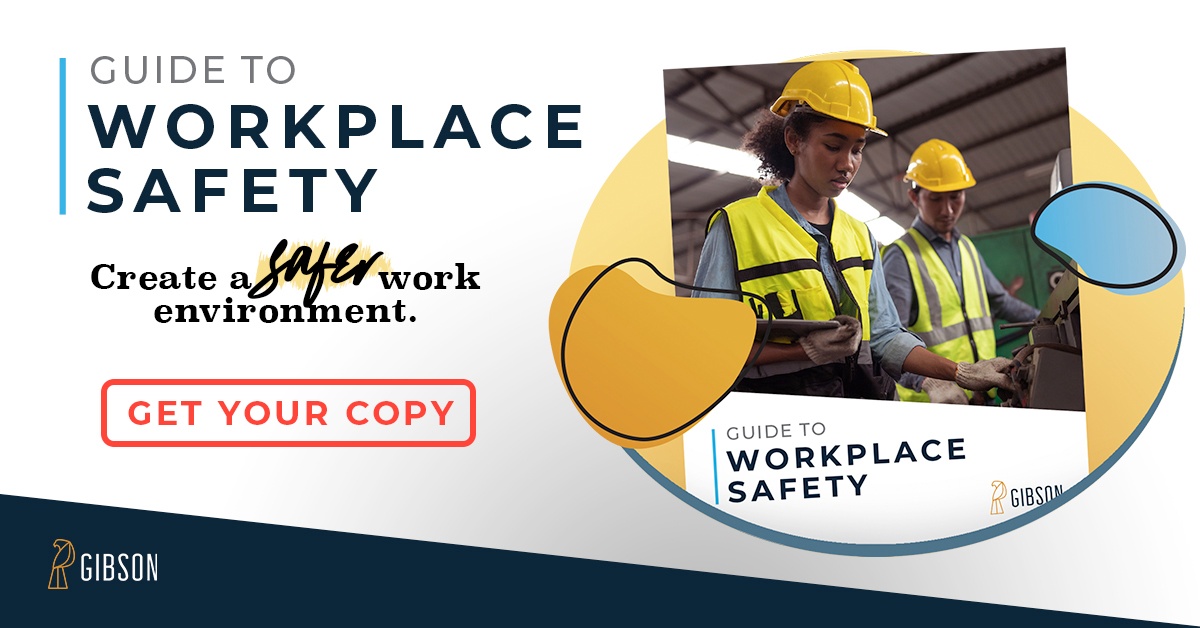 Maintaining a safe workplace is key to business success. Having a safe work environment will not only keep the probability and severity of occupational injuries at bay, but also give your workers the peace of mind to focus on their tasks without fear of physical threats. As WorkMT, a non-profit organization, explains, "A serious workplace injury or death changes lives forever – for families, friends, communities, and coworkers too." Occupational injuries, illnesses, and deaths in your business evoke fears and uncertainty; the mentality of "it could have been me" or "would I be next" will play against your workers' psychology, making them feel insecure and anxious.
Maintaining a safe workplace is key to business success. Having a safe work environment will not only keep the probability and severity of occupational injuries at bay, but also give your workers the peace of mind to focus on their tasks without fear of physical threats. As WorkMT, a non-profit organization, explains, "A serious workplace injury or death changes lives forever – for families, friends, communities, and coworkers too." Occupational injuries, illnesses, and deaths in your business evoke fears and uncertainty; the mentality of "it could have been me" or "would I be next" will play against your workers' psychology, making them feel insecure and anxious.
Having workers who are constantly worried about getting injured will detrimentally affect your business productivity and reputation. Creating a safe workplace then becomes a goal for all business owners. When it comes to operating a forklift that can handle tons of loads in any given transaction, your chance of having a major injury automatically increases. Because of that, it is important for you to observe the following five safety steps and learn to create a worker-friendly environment:
Step 1: Mechanic Inspection/Maintenance
Periodic mechanic maintenance will minimize your forklifts' probability of experiencing a sudden breakdown that may result in a hazardous situation for you and your employees. Additionally, Occupational Safety & Health Administration also recommends workers to reduce the possibility of operating a dysfunctional forklift by conducting pre-operational inspections and reporting any suspicious mechanic defects to their supervisors.
Step 2: Work Loads
People make mistakes when they are in a hurry. Sometimes, the urge to get things done on time can lead workers to compromise safety rules in the name of expediency. To keep your workers from experiencing potential accidents resulted from carrying excessive weights on the forklift, speeding across aisles, and/or making sharp turns, try to keep the work load at a reasonable amount so your workers can enjoy a healthy working pace and attend each task with great care.
Step 3: Workplace Design
The width of your aisles and the height of your stacking should not exceed the maximum tolerance of your forklifts. Removing all obstructions at doors and intersections, maintaining uncluttered aisles, and keeping the loading dock clean are additional ways to maintaining a safe area for forklift operation.
Step 4: Safety Education
Regardless the proficiency and experience level of your forklift drivers, it never hurts to host periodic safety education in your workplace. There is no such thing as over-emphasizing safety rules; if such a thing does exist, it is always a good idea to err on the side of caution and regularly educate your drivers and employees about the safety means to handle and operate a forklift. On the other hand, if your business does not offer any safety classes, it is time to start one or send your workers to a reputable training session.
Step 5: Driver's Qualification
Hiring and training qualified drivers to operate your forklifts will minimize accidents resulted from unprofessional training, inexperience, and frivolity. Check the credentials and qualifications of your drivers in the hiring process. Make sure that all your drivers have gone through a comprehensive training program that was taught by a credible organization, company, or instructor. Lastly, conduct regular physical and mental checkup of existing drivers to ensure that their health conditions will not compromise sound judgment in the workplace.
Enforce Safety Guidelines with Confidence
Creating a safe environment is both the responsibility of the employers and the employees. Make safety the number one rule in your workplace today to save yourself from costly heartaches in the future.
This content was written and shared by Tom Reddon
Tom Reddon is a Forklift Specialist and Blog Manager for National Forklift Exchange. He also sits on the MHEDA Executive Dialogue team. Connect with him via Twitter at @TomReddon.





